I may get commissions for purchases made through links in this post.
Are you prepared if disaster strikes in your area, causing the electrical grid to go down for an extended period?
Electricity is important, and is the most versatile and convenient end-use energy type ever used by humanity. If electricity is the driver for modern societies, what will we do if we are disconnected from it?
- You can “bug-out” and evacuate to an area not affected by an electric grid emergency.
- Or, you can “bug-in” and stay in place, which will require some preparations on your part if you want to be comfortable.
It seems as though time hardly passes before a new disaster in the world makes headlines at your favorite news website. Earthquakes, tsunamis, typhoons and hurricanes, tornadoes, volcanic eruptions, and wild-fires top the list for natural phenomena which can affect our lives.
Then there are man-made disasters, such as war, civil unrest, nuclear disasters, or even major offshore oil-spills. Which of all of these might affect the area where you live, and how would you cope with any adversity resulting from these influences?
Our experiences with devastating Florida hurricanes
My family has experience with grid-down situations, having lived through several direct-hits and near misses by hurricanes which either struck or passed danger-close to Pensacola, Florida, on the northern Gulf Coast, where we live.
Hurricane Erin in 1995 and Hurricane Ivan in 2004 were definitely biggies for Pensacola.
Erin didn’t damage our house, but caused a huge mess everywhere by blowing down branches and leaves from trees all over the place.
At least, in the aftermath of Hurricane Erin, we purchased custom aluminum hurricane shutters for all windows and exterior openings on our house so we would be better prepared for these storms in the future.
Hurricane Erin was a moderate storm and caused little damage to the houses in my neighborhood. However, the storm blew down copious amounts of leaves from trees, and broke branches everywhere, leaving a large mess to clean-up throughout our community as a whole.
The power was down for several days and we had no generator, so we were forced to use-up any refrigerated and frozen foods we had or else they would spoil.
With no power—our house is equipped with an electric stove—we had to cook on a propane barbeque grille.
Others were in a similar predicament, and soon the neighborhood seemed to turn into one big barbeque, with people hosting cookouts out in front of their houses and offering portions of food to their neighbors. As the days went by, however, our food choices became narrower as we consumed what we had in our pantry.
The supermarkets that managed to open immediately after the storm were soon sold-out down to bare shelves, so you had to be resourceful and also patient as you did your meal planning.
All in all, it took about 5 days for the power to return, and about a week for some semblance of normalcy to reappear in our community.
Hurricane Ivan blew so hard we thought our roof was going to come off. We hunkered-down in the hallway of our house and hoped for the best.
Ivan toppled a large oak tree that grew in our back yard. Luckily, it fell into an open spot and only grazed the house.
The wind blew so furiously that it even caused the ground to vibrate.
The devastation from Ivan locally was vast. If you lived near the shoreline of the ocean or near inland bays, your property was flooded by a terrible storm surge.
About 90% of the buildings in our community needed roof-replacements or repairs. Ivan caused $12,000 worth of damage to our house; we were lucky in that our insurer was very cooperative. Some people lacked insurance and were just screwed.
The power was out for days afterward during both hurricanes, and we really had to be resourceful. We lacked any sort of generator in the aftermath of Hurricane Erin, so we had to eat our frozen and refrigerated foods very quickly to avoid their spoilage.
For Hurricane Ivan, we had a small portable generator that allowed us to power our refrigerator and a small freezer we kept in the garage.
We are much better prepared for grid-out situations now, because in 2007, we acquired a Generac whole-house generator that runs on natural gas and which kicks-in within one minute after a power failure.
It can power all major appliances and interior lighting, though we run the air conditioner sparingly when the Generac is powering the house. It has only come on a few times during minor outages in the 8 years we have had it, but it works.
We Continue to Prepare
We have continued to incorporate improvements to our house in the time since the last hurricanes struck Pensacola. We had our house hardened to the most recent building codes in 2010.
This included adding additional hurricane strapping to our roof joists, incorporating gable end-bracing in our attic, strengthening exterior door frames, adding stormproof garage doors, and upgrading our hurricane shutter system.
How to Prepare for a Grid-Down Emergency
Here are some things you need to consider should you face an emergency where you might lose the use of the electric grid or basic municipal services.
We are prepared for grid-down situations, but what will you do if the grid goes down from a natural or man-made calamity where you live?
You will have more to worry about than just losing electricity, and should prepare accordingly. The following are some tips to help you prepare.
Shelter
If you are going to “bug-in” and stay in place, the most natural form of shelter for you will likely be your primary place of residence.
During the cold months, shelter will be your #1 priority, and you may have to think of alternate means to heat your living quarters if the electricity is out and your gas supply has been disrupted.
In any case, you will likely “bug-in” where you live, as you may be concerned with clean-up and repairs at your property, and keeping your possessions secure.
Water
You will need a water source for your family. A grid-down situation will likely entail at the least, boil-water notices from your local water utility. In some cases, the water might be shut off temporarily.
The general rule is you need 1-2 gallons per day for each member of your household, which would mean keeping up to about 112 gallons of water on hand to be prepared for a 2-week long water-outage.
We have always helped mitigate potential water-outages by beefing-up our supply of stored bottled water at the commencement of hurricane season. In a worse case situation, we would draw water from the swimming pool, boil it and drink it.
Food
During a disaster with a grid-level failure, you are going to need to feed your family. After Hurricanes Erin and Ivan, our immediate concerns were to eat any perishable foodstuffs that we could not keep very long.
Here is where having at least a minimally-sized emergency food storage comes in handy. You should have some military Meal, Ready to Eat (MRE) meals, and some easily-prepared canned and dry goods, or some freeze dried/dehydrated meals, etc.
Stored foods should be those with long-term expiration dates and which will hold up well in storage. Here are 10 foods preppers recommend everyone to stock.
You will also need a way to cook or heat-up your food. If your house has an electric stove, you could be out of luck if the grid is down.
Having a propane camp stove or making sure your gas barbeque has a full propane tank might be essential to your ability to cook while the grid is down.
Heating
If your grid-down emergency occurs during winter, you may need to heat your shelter. If your home is equipped with a fireplace, the obvious preparation is to make sure you have a supply of firewood. Alternatively, a portable kerosene heater may be what you need.
Using anything that requires burning should be met with extreme caution. You don’t want to accidentally set your home on fire, and you want to be wary of the possibility of carbon monoxide poisoning.
Therefore, never bring your charcoal brazier indoors under any circumstances or introduce something burning or smoldering into a tightly closed indoor space.
Remember that carbon monoxide is both odorless/colorless, and you will not sense its presence as it slowly affects you.
Fill Your Vehicles with Gasoline
A grid-down emergency will render the pumps at your filling station inoperable. Gasoline and/or diesel might be harder to come by if the fuel-distribution network which supplies your local area becomes disrupted during the emergency. It is therefore very smart to fill up the fuel tanks of any vehicles you have before an emergency strikes your area.
Communications
Cell phones and landlines cannot be depended on to work during power outages, and your Internet service provider may also be down. A good battery-powered radio will be helpful to receive news and notifications in the aftermath of a grid-down emergency.
In the aftermath of Hurricane Ivan, we powered a small TV set with our portable generator. Our cable was still out, but we could get the broadcast from our local ABC affiliate via an aerial.
Being able to receive news from that TV was very comforting, and it allowed us to take in the magnitude of the damage that Hurricane Ivan had wrought throughout our community.
At least we were able to power our refrigerator with our portable generator, so we avoided mass food spoilage with this storm.
Our generator basically powered two things for us: (1) our refrigerator, so we could avoid food spoilage, and (2) a small television set.
For the latter, our cable was still out, but we could get the broadcast from our local ABC affiliate via an aerial. Being able to receive news from that TV was very comforting, and it allowed us to take in the magnitude of the damage that Hurricane Ivan had wrought throughout our community.
Lighting
We in the West are so accustomed to flipping a wall-switch in order for a light to come on. So how do you have lighting when there is no electricity? In the old days, kerosene lanterns, candles, and flashlights were needed to provide lighting when the electricity was out.
In the modern age, some really cool products are available which will help you dispense with using unsafe and polluting candles and kerosene lamps.
You can acquire some Nokero solar lightbulbs, which provide up to 7 hours of light at 10 lumens after charging during daylight from a small solar panel on the back of the light.
Modern LED lanterns, spotlights, and flashlights are way better than older technology portable lighting methods, and by using rechargeable batteries and a solar battery charger, you can keep these devices running for as long as you need to.
LED Flashlights, Spotlights, and Headlamps
The old-fashioned flashlights using large D-cell batteries, powering a small incandescent bulb are out, and newer, more compact, and technically advanced LED handheld lights, torches, and spotlights have taken their place.
Brands such as SureFire, Streamlight, Fenix, LED Lenser, Petzl, among others, offer very high quality LED flashlights, spotlights, and headlamps that are great for emergency situations where you need some lighting.
LED Lanterns
There are numerous brands of LED lanterns which provide superior lighting to the old-fashioned kerosene lanterns without the hassle of messing with fuels, mantles, etc. It simply makes no sense to use the old fashioned technology when superior products are available.
Solar Light Bulbs
Established in 2010, the Nokero Corporation had a noble goal when it developed its line of solar light bulbs. Its target market was 3rd World countries where electricity is mostly not available, and where kerosene lamps provide primary lighting after the sun goes down.
Nokero estimates that the people of poor countries collectively spend roughly $38 billion annually buying kerosene to burn for lighting. Nokero’s mission was to use modern technology to design a safe, affordable and environmentally-friendly form of lighting that eliminates the need for harmful and polluting fuels. In fact the name of the company, “Nokero,” is a take on “no kerosene.”
Nokero’s N202 solar light bulb is made out of durable ABS plastic and has very unique construction. On the inside is a rechargeable (and replaceable) AA NiMH battery, powering a low-voltage LED lighting element.
The lighting element and battery are covered by a polycarbonate globe. On the back of the light bulb is a small solar panel that is used to charge the battery. The light has a two-position power switch for low and high settings, and will run for 2 hours on high (25 lumen setting), and for 7 hours on low (10 lumen setting) on a day’s charge.
The light has a photo sensor that automatically shuts the light down when enough light shines to begin charging the battery, and will allow the light to automatically come on when the sun goes down. Or, the light bulb can be manually turned off and on as needed.
Nokero offers other lighting products besides the N202. Nokero’s solar light bulbs got their baptism of fire during the aftermath of the 2011 tsunami that laid waste to Fukushima and other areas of eastern Japan.
Nokero sent thousands of its bulbs to Japan in the aftermath of the tsunami. More recently, 10,000 solar light bulbs were shipped to the Philippines in the aftermath of 2013’s Typhoon Haiyan.
The results were dramatic, as 50,000 people were able to recover from the typhoon faster by using safe, reliable, Nokero solar lightbulbs.
Nokero claims that most of the recipients continued to use the lights 14 months later.
Batteries/Charger
It is good to have enough batteries (rechargeable preferred) around to power your portable devices and a way to charge them. Solar battery chargers are available that can be used to charge batteries, laptops, tablets, and cell phones (different chargers may be needed for different battery types).
Your unprepared neighbors will be disappointed when they go to purchase batteries after a disaster passes and find the store shelves cleaned out. With rechargeable batteries and a solar charger, you can keep yourself at least nominally powered until the grid comes back up.
Backup Power Systems
A portable generator is useful for powering at least one or two essential items after a disaster. After Hurricane Ivan, our portable generator was very useful, but it consumed copious amounts of gasoline—about 8 gallons per day.
So if you are going to obtain a portable generator, be sure and study all its specs so you know how much fuel it will consume for the electricity it generates. As I mentioned earlier, we now have a Generac whole house generator in case the grid goes down.
Portable Generator
A portable generator is useful for powering at least one or two essential items after a disaster. As useful as it was, we found that our generator used after Hurricane Ivan consumed copious amounts of gasoline—about 8 gallons per day.
So if you are going to obtain a portable generator, be sure and study all its specs so you know how much fuel it will consume for the electricity it generates.
After 2007, my wife insisted that we invest in a Generac whole-house generator. We have not had a hurricane strike locally since Ivan in 2004, but there have been instances of temporary power outages where the generator has been used.
It comes on automatically in a power outage and easily powers our appliances and lighting, and with caution we can even run the air conditioning.
It runs on natural gas, so as long as the gas keeps flowing, our Generac will be able to power us during the next grid-level power failure.
In the ideal, what I would like to have one day is a Dow PowerHouse™ solar rooftop, with a Tesla Powerwall battery storage unit to store the electricity generated by the roof. Then your concerns during a grid-out situation might be to just sit back and smile!
I cannot currently afford such a setup, but I am absolutely convinced that within 20-30 years, rooftop solar and associated battery storage will become standard for new home construction in America, and this technology will forever change the way power is generated, distributed, and used here.
Sanitation
Store plenty of disposable tableware to cut down on washing needs, and make sure you have a plentiful supply of antibacterial wipes, baby wipes, and hand sanitizer, as these can be used without water.
If the sewer system is out of service, have handy a supply of heavy duty contractor bags and kitty litter.
You can line a trashcan or bucket with a contractor bag, do your business into the container, and cover it with a layer of kitty-litter; changing out the bag as necessary.
First Aid
After your grid-down emergency, the drug stores and pharmacies may be closed until the power is restored.
You will need to keep on-hand adequate supplies of essential items such as bandages, antibiotic ointments, and over-the-counter medications your family uses, and antidiarrheal medication to help your family cope with the change in sanitary and dietary conditions.
Make sure you have enough of your prescription medications to carry you until the pharmacies can reopen.
Protection
You will want to remain vigilant after a grid-down emergency occurs. If you are a gun-owner, make sure you are prepared to defend your property as necessary.
If you do not feel comfortable using firearms or keeping them around your property, you should prepare your security to your comfort level. The latter may include having some pepper-spray handy, or just ensuring that you and your neighbors watch out for each other.
Money
In the modern era of electronic banking and plastic money, how will you pay for things if the grid is down? If the grid is out, the odds are, your bank’s ATMs will also be down. Telecommunications and cable/Internet services might also be out of service.
So, it could be highly likely that local retail establishments might not be able to accept payments via credit or debit cards. And, they may not be willing to take your credit card numbers and information in exchange for goods if they have to wait for days to run and verify the numbers.
In grid-down situations, cash will be king.
A person with cash can give a retailer a verifiable payment that is immediately valid upon exchange. So, it might behoove you to keep a nominal amount of cash and coins for emergencies, in small denominations, so you can pay for goods and services until the normal electronic banking/payments system can be restored.
Prior Planning Helps
It always helps to have a plan so that when disaster strikes your area, you are not left wondering where to begin. There is an old saying that refers to the “6-Ps.” That is:
“Prior Planning Prevents P*ss-Poor Performance.”
Execute some due diligence about what you will need if the grid goes down. Develop some procedures and start acquiring the things you need to help mitigate the effects of a grid-down emergency.
If you are financially challenged, make a list of items you want, and buy them as you can afford them. This certainly beats running around after disaster strikes, trying to compete with all of the other folks who failed to prepare to get the things they need.
Having some level of preparation beats not being prepared at all, and you will thank yourself for the preparation you did make after the emergency arrives.
Food
During a disaster with a grid-level failure, you are going to need to feed your family. After Hurricanes Erin and Ivan, our immediate concerns were to eat any perishable foodstuffs that we could not keep very long.
Here is where having at least a minimally-sized emergency food storage comes in handy. You should have some MREs, and some easily-prepared canned and dry goods, etc., which have long-term expiration dates and which will hold up well in storage.
You will also need a way to cook or heat-up your food. If your house has an electric stove, you could be out of luck if the grid is down.
Having a propane camp stove or making sure your gas barbeque has a full propane tank might be essential to your ability to cook while the grid is down.
Bottled Water
We use a bottled water service, and as hurricane season approaches, my wife makes sure we keep some extra bottled water on hand in case a local storm emergency occurs.
If the water utility is not disrupted, there will likely be a “boil water” notice issued for the local tap water. Having bottled water handy at least mitigates having a potable water problem if the drinking water utility has issues after a storm.
You may not be able to prepare for every potential contingency that you might face in an emergency, but having some level of preparation beats not being prepared at all, and you will thank yourself for the preparation you did make after the emergency arrives.
American Red Cross
If the disaster is bad enough, the Red Cross might be servicing your community. After both Hurricanes Erin and Ivan, the Red Cross sent trucks out to neighborhoods in my community where they served hot dogs, and did things like distribute ice, bottled water, and MREs.
Their services were both helpful and appreciated. So, make sure you support the Red Cross, as they will be there for your community when the chips are down.
By Z. Man, Pensacola, Florida USA.


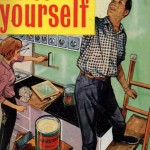

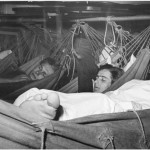

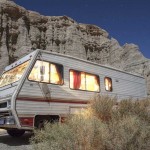
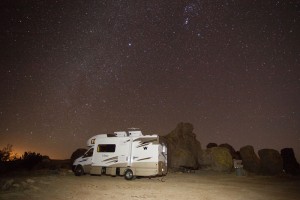
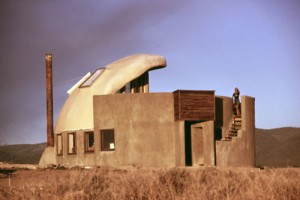
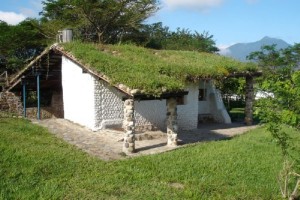

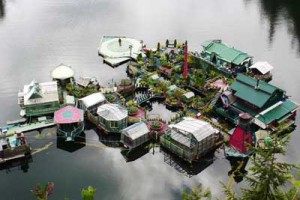

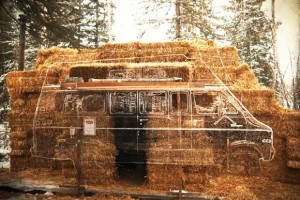
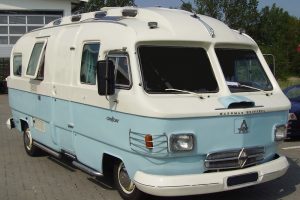







Can I simply just say what a comfirt to uncover somebody
that actually knows what they’re discussing
on the net. You certainly know how to bring a problem tto
light and maake it important. A lott more people
rreally need to check this out and understand this
side of the story. It’s surprising you’re not mmore popular because you
most certaily possess the gift.
Great article which covers so many important areas. Many people who live in urban areas don’t appreciate the issues you’ve covered. The idea of a bug out situation is thought of as something rural. However, everyone needs to have a bug in plan. Things such as flashlights and food shouldn’t be overlooked.